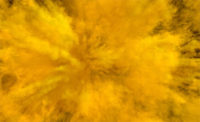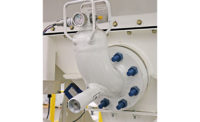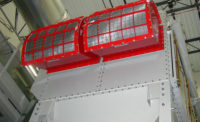For operations that produce toxic or explosive dusts, it is a priority to keep the workplace safe and compliant. Industrial dust collectors equipped with integrated safety monitoring filters (iSMFs) can isolate dust particulates to ensure that no measurable weight of emissions is discharged. ISMFs require a smaller footprint than traditional secondary filters, provide additional explosion protection and enable you to recirculate air for energy savings. The discussion below explores these four key benefits of using iSMFs.
Improved filter efficiency
ISMFs are known as after-filters or secondary filters because they prevent collected dust from re-entering the workspace if there is a leak in a primary filter. Primary cartridge filters are measured by gravimetric analysis, which is based on particle capture by weight. For example, filter efficiency might be stated as 99.995 percent on particles of 0.5 microns or larger by weight.
The efficiency of a secondary iSMF may be expressed as a Minimum Efficiency Reporting Value, or MERV, based on a scale of 1 to 16, with MERV 16 being the highest, indicating 95% or greater efficiency.
When the iSMFs use HEPA-grade media, they can achieve a dispersed oil particulate testing (DOP) efficiency of 99.97% on 0.3-micron. DOP is the traditional aerosol photometer method of testing the integrity of HEPA filters by introducing particulates. When the iSMFs use ASHRAE-grade filters, they should achieve 95% ASHRAE efficiency and be rated for 2650 cubic feet per minute (4248 cubic meters per hour) per filter.
Explosion protection
Applications that process combustible dusts require extra measures to protect against explosions that can occur in the dust collector. An iSMF is a passive device that complies with National Fire Protection Association (NFPA) standards for the explosion protection of dust collection systems. The goal of a passive device is to control an explosion to keep employees safe and minimize equipment damage in the plant.
ISMFs incorporating HEPA- or ASHRAE-grade filters isolate the downstream equipment from the progression of a flame front during an explosion. The iSMF also prevents the transmission of explosive dust from the collector. Remote mounted secondary filters cannot do this and are typically not designed to withstand the pressures associated with an explosion. In addition, ducting design and location of remote mounted filters add excessive variables that must be considered by a dust hazard analysis.
The iSMF sets up a redundant system that arrests the flame front and monitors the condition of the primary filters. With this feedback, the operator knows when a primary filter starts leaking and can fix the leak before it becomes a safety issue. Also, the iSMF protects the facility from the hazard of any dust passing through a damaged primary filter. Sparks or debris have the potential to be pulled into the collector during operation. The iSMF is monitored for changes in differential pressure and can be programmed to signal an alarm or shut the dust collector down, if necessary.
Ask your dust collector supplier if it can provide an iSMF system that has been tested as an outlet isolation device/flame front barrier in accordance with NFPA standards. You can verify that your system has been properly tested by requesting the required documentation from your supplier.
Air recirculation for energy savings
A dust collector with an iSMF allows you to recirculate exhaust air back into the work space, even when your dust is explosive. If you are containing factory air indoors and the air is climate-controlled, air recirculation is an ideal way to save energy and maximize the return on investment of a dust collector. By recirculating heated or air-conditioned air back through the plant instead of venting it outdoors, the cost to replace that conditioned air is eliminated. Facilities in all regions of the United States report five- to six-figure annual energy savings, with the greatest savings seen in northern climates that experience longer, colder winters. In addition, you will eliminate the complex EPA paperwork and monitoring procedures involved when fumes are exhausted outdoors.
When recirculating cleaned air, you need to keep below OSHA PELs for your particular dust contaminants. Secondary HEPA-grade iSMFs provide a final cleaning of the air before it goes back into the facility. Where toxic dusts are present, a safety monitoring system is mandatory and should always use a HEPA filter as the final filter. In some cases, additional pressure wave protection may be required.
Smaller footprint
Traditional remote-mounted secondary filters require cumbersome ducting configurations and additional supports that take up valuable space. The iSMF units are installed at the factory on top of the dust collector, which minimizes the total footprint. No additional ductwork, transitions or supports are required. Hazardous particulates are contained because the iSMF unit allows filters to be located prior to the fan, keeping them under negative pressure. And less ductwork means a lower pressure drop, which translates into energy savings.
ISMFs reduce installation costs because they don’t require expensive ductwork. Also, you don't have to connect additional remote-mounted systems, which typically require additional consideration to access the filters when they are required to be changed. iSMFs also reduce the the total footprint of the dust collection system, saving valuable floor space.



